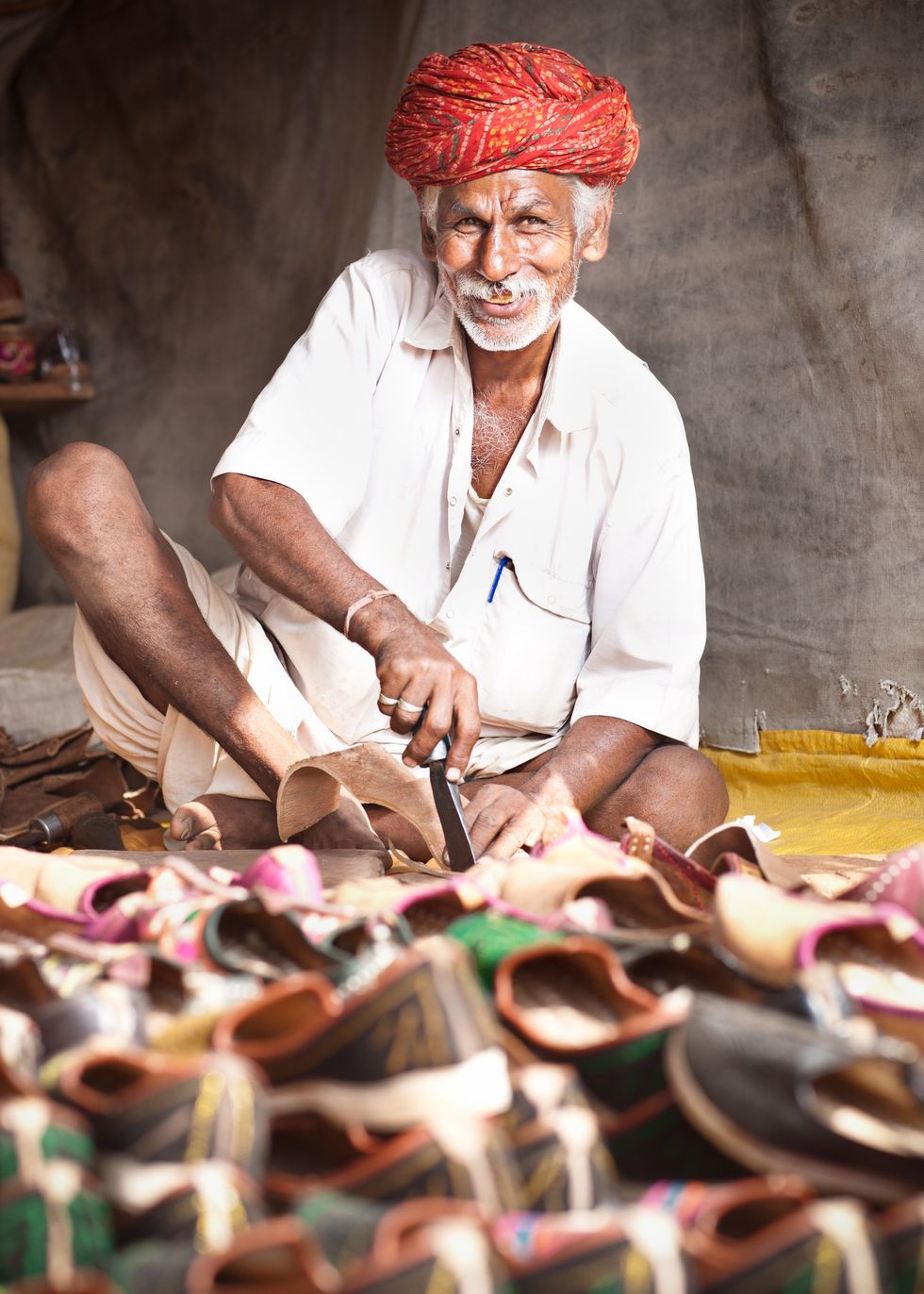Agni is the first word of the Rig Veda. It is the only element that cannot be polluted and also the only element which defies gravity and rises up. Agni holds within it the power to purify and transform. No wonder it is the chosen medium for devas and devis to interact with us during a Vedic yagya.
The science of yagyas is as old as Creation. Lord Brahma performed the first yagya where he sacrificed a part of himself. From his sacrifice manifested 33 devas and devis, who took charge of various aspects of Creation. Brahma ji became the Prajapati, the Creator, responsible for physical creation. Shri Vishnu took upon the role of the Preserver, He who runs the creation. Bhagwan Shiv became responsible for the journey back to the source.
Yagyas are the means to nourish Creation. In every yagya, there is a havi (oblation), that which is sacrificed or given back. And this sacrifice is not of someone else, or of an animal; the sacrifice is of self or an aspect of self. Lord Brahma sacrificed a part of himself. Ravan too sacrificed his head nine times and only then did he have Shiv darshan. Puranic texts abound with instances of men, devas and asuras performing yagyas, and in all these yagyas they sacrificed a part or desire of self.
Yagyas are of various kinds. The foremost is the yagya for Prajapati Brahma, who is the progenitor of all, to whom we owe our life, body and experiences of the manifested creation. Performing this yagya ensures the flow is maintained from the Creator to self.
The next yagya is for the dev or devi, whose sadhna has been prescribed by one’s Guru. Performing this yagya bestows the sadhak with the siddhi of that dev or devi. The dev or devi then guides the sadhak through his/her journey, and their shakti can be utilised by the sadhak to fuel his/her sadhna.
A third kind of yagya is for the fulfilment of a task, ‘karya purti’, for example, the Chandi yagya, Rudra yagya, Ashvamedha or Rajasuya. When you perform such a yagya in Guru Sanidhya, the purpose for which the yagya is performed materialises with certainty. However, these yagyas should only be performed when one has accumulated suitable karmic strength. Even if you attain something in the physical through a yagya, in the absence of requisite karmas, it will be at the cost of something else, which will be taken away from you to balance out karmas. Therefore, the yagyas for karya purti are not prescribed to all and sundry.
Next, there are yagyas, which are performed not for someone specific or towards a specific end, but simply as a duty by virtue of being a human and a part and parcel of Creation. Agnihotra falls in this category.
Then there are yagyas, which pertain to the food chain, to the co-existence of various aspects of Creation. For example, a tree performs a yagya all its life, sacrificing itself to provide us food, air and shelter. As humans, it is our duty to perform a yagya for the tree, by nurturing it. Similarly, the cow bears immense pain and agony to nourish us with its milk. It then becomes our duty to perform a yagya for the cow, by protecting and providing for it. In fact, every entity in Creation is performing a yagya: the sun is burning every day to give us heat and light, the earth bears our weight to sustain life, the winds blow, the rivers flow. Each is performing a yagya.
Ashwini GurujiTapasya or penance too is a form of yagya. Every human has to perform tapasya to give back to Creation. Only then is he entitled to human birth and body and related pleasures. The ones who do not perform these yagyas move into the yonis of bhoots and pesach.
At Dhyan Ashram, the sadhaks have traversed various lokas and yugas and interacted with all kinds of entities and know this for a fact. We need to give back to Creation and yagya is a means to do that. When you perform a yagya, the dev or devi that is invoked manifests in the yagya fire, changes are felt in the body and environment, and air becomes fragrant. There is no smoke in a Vedic yagya. All these are signs that the yagya is successful. You can take a look at manifestations of devas and devis in yagyas performed at Dhyan Ashram on dhyanfoundation.com.
Yagya basically means a sacrifice of whatever is dear to you. The Creation runs on sacrifice, the bigger the sacrifice, the more is the gain. Giving pain to an animal for sacrificing gets no punya. It gets you hells only. The Guru prescribes a yagya and mantra sadhna as per the desire and capacity of the sadhak, which opens doorways to the subtler dimensions.
We will be continuing this series with various kinds of yagya kunds, and the various mantras for various devs and devis for specific objects to be achieved. It is essential in a yagya that the dev purush or the form of the dev has to manifest in the havan agni or the smoke. Only then is it said to be successful. Just chanting and putting things in the fire is not called a yagya; it's a waste of time and creates only pollution.
(Ashwini Guruji is the guiding light of Dhyan Ashram. To know more visit www.dhyanfoundation.com.)

















 Shefali Jariwala death raises concern over anti ageing drugs and self medication Instagram/shefalijariwala
Shefali Jariwala death raises concern over anti ageing drugs and self medication Instagram/shefalijariwala  Anti ageing pills found at Shefali Jariwala home spark health safety debate Instagram/shefalijariwala
Anti ageing pills found at Shefali Jariwala home spark health safety debate Instagram/shefalijariwala 
 Prada confirms Kolhapuri chappals inspired its 2026 Milan collectionInstagram/
Prada confirms Kolhapuri chappals inspired its 2026 Milan collectionInstagram/ Kolhapuri chappals have been crafted for centuries and received GI tag in 2019 iStock
Kolhapuri chappals have been crafted for centuries and received GI tag in 2019 iStock 
 Wintour also became synonymous with the Met GalaGetty Images
Wintour also became synonymous with the Met GalaGetty Images